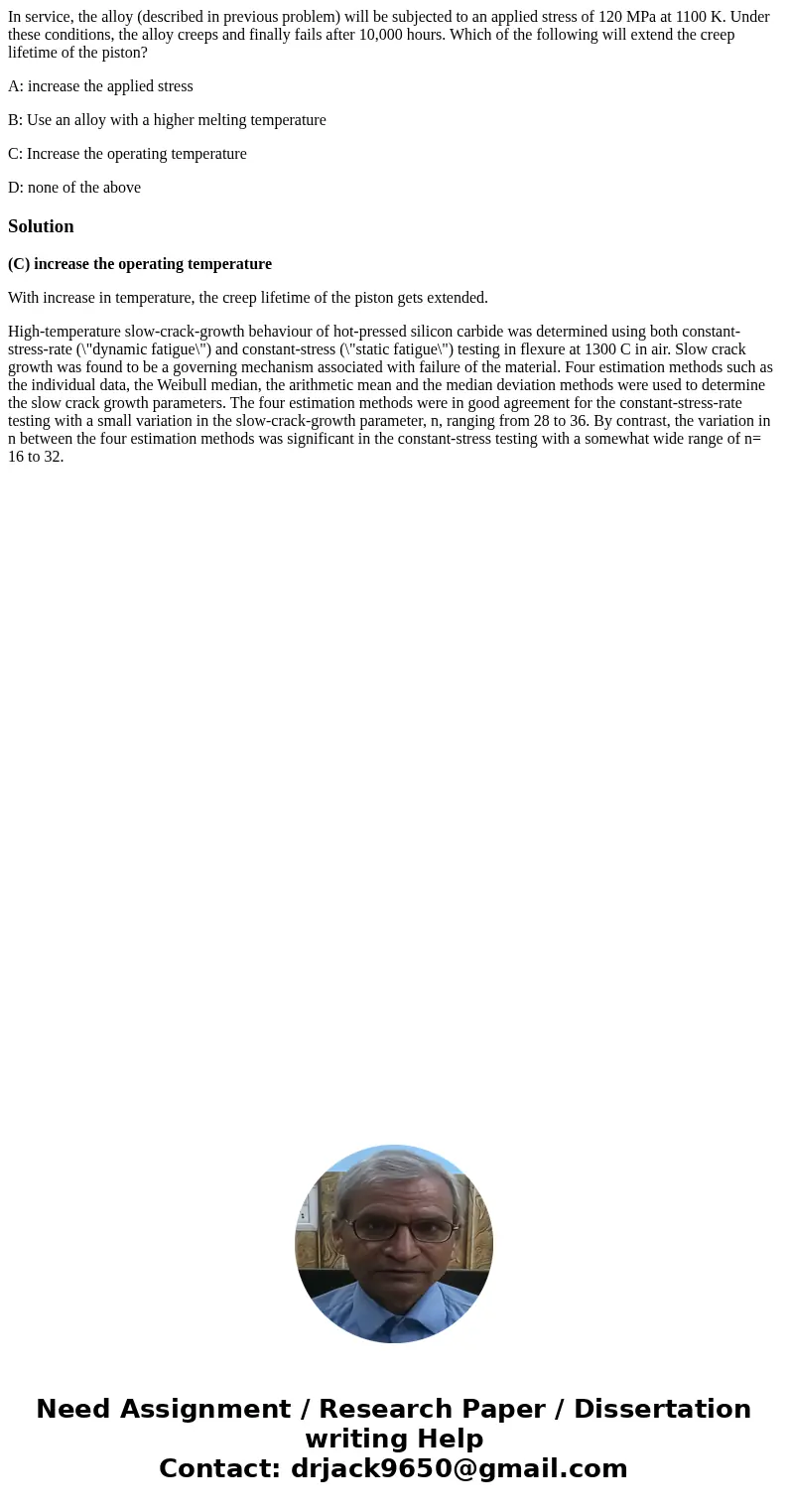In service the alloy described in previous problem will be s
In service, the alloy (described in previous problem) will be subjected to an applied stress of 120 MPa at 1100 K. Under these conditions, the alloy creeps and finally fails after 10,000 hours. Which of the following will extend the creep lifetime of the piston?
A: increase the applied stress
B: Use an alloy with a higher melting temperature
C: Increase the operating temperature
D: none of the above
Solution
(C) increase the operating temperature
With increase in temperature, the creep lifetime of the piston gets extended.
High-temperature slow-crack-growth behaviour of hot-pressed silicon carbide was determined using both constant-stress-rate (\"dynamic fatigue\") and constant-stress (\"static fatigue\") testing in flexure at 1300 C in air. Slow crack growth was found to be a governing mechanism associated with failure of the material. Four estimation methods such as the individual data, the Weibull median, the arithmetic mean and the median deviation methods were used to determine the slow crack growth parameters. The four estimation methods were in good agreement for the constant-stress-rate testing with a small variation in the slow-crack-growth parameter, n, ranging from 28 to 36. By contrast, the variation in n between the four estimation methods was significant in the constant-stress testing with a somewhat wide range of n= 16 to 32.

 Homework Sourse
Homework Sourse